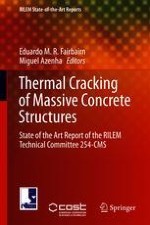2019 | OriginalPaper | Buchkapitel
2. Hydration and Heat Development
verfasst von : Laurie Lacarrière, Agnieszka Knoppik, Wilson Ricardo Leal da Silva, Tulio Honorio, Vit Šmilauer, Shingo Asamoto, Eduardo M. R. Fairbairn
Erschienen in: Thermal Cracking of Massive Concrete Structures
Aktivieren Sie unsere intelligente Suche, um passende Fachinhalte oder Patente zu finden.
Wählen Sie Textabschnitte aus um mit Künstlicher Intelligenz passenden Patente zu finden. powered by
Markieren Sie Textabschnitte, um KI-gestützt weitere passende Inhalte zu finden. powered by
